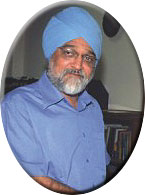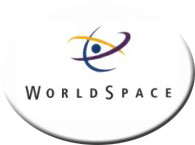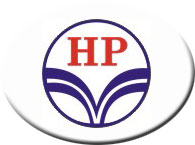|
A
MOTLEY COLLECTION OF BUSINESS AND ECONOMIC NEWS |
 Relook at FDI caps in select areas: Montek Relook at FDI caps in select areas: Montek
Planning Commission Deputy Chairman Montek Singh Ahluwalia has said the government may review some of the existing foreign direct investment (FDI) caps in specific areas in a bid to achieve its FDI target. Speaking at the 16th Asian Corporate Conference session on “India’s new priorities: Extending the reach of economic reform and prosperity”, jointly organised by the Asia Society, Confederation of Indian Industry (CII), and the Wall Street Journal today, Ahluwalia said, “The country can absorb three times of FDI that currently exists. We are also working on a policy for streamlining and liberalising it further.”
Asked about raising the FDI limit in the real estate sector, he said the commission was “looking into that matter, in general as part of the policy review. About a year ago, the policy towards FDI investment in real estate was liberalised. There are demands to liberalise it further and this is something that we are discussing as part of a general review”.
|
|
|
 NRIs, MNCs, lenders make a cool $10 bn from India NRIs, MNCs, lenders make a cool $10 bn from India
It’s not just FIIs who are making money out of India. What often gets overlooked is that MNCs, foreign lenders and the Indian diaspora together earned a mindboggling $10 billion from the country in 2005. This is the highest they have earned so far out of India in a single year. Amid spiralling growth, money flowed out as dividend on stock holdings, interest payments by India Inc and returns given by banks on foreign currency deposit. Even after excluding $1.5bn as interest expense on the India Millennium Deposit, the return that overseas institutions and NRIs earned on their exposure to India is around $8 billion? a new high. Even in the best year, their combined earnings from India did not cross $7.3 billion, according to RBI data.
|
|
|
 Indian companies get high on patents Indian companies get high on patents
There are different ways of measuring innovation. The number of international patents that a country accumulates is one of them. India seems to be doing rather well on this count, with an increase in both the number of US patents issued and the number of patent applications. India filed for 1,278 US patents in 2005, up by 36% over 2004. What’s more interesting is that the number of patents issued to India increased by 11% to 405, much higher than the growth rates of Japan, Taiwan, Canada, Germany and even China. Indian companies have been stepping up their R&D activity and pharmaceuticals is one obvious sector, which has seen many companies being issued patents. Indian companies are making inroads into global markets, and a strong IPR pipeline will give them an edge. Indian drug makers, which were granted patents in ’05 for the US market, include Ranbaxy Labs, Orchids Chemicals and Pharmaceuticals, Biocon, Sun Pharma, Lupin, Dr Reddy’s Labs, Wockhardt, Aurobindo and Cipla. Then there are others like Unilever’s India-based R&D operations.
|
|
|
 Naina Lal Kidwai is HSBC boss Naina Lal Kidwai is HSBC boss
Naina Lal Kidwai has become the first woman to head the operations of a foreign bank in India. The deputy chief executive officer of the Hong Kong and Shanghai Banking Corporation has taken over as chief executive from Niall SK Booker, who is to move to Dubai as deputy chairman and CEO of HSBC Bank in the Middle East. Kidwai has been deputy chief executive officer of HSBC in India since June 2004. She joined HSBC in November 2002 as vice-chairman and managing director of HSBC Securities and Capital Markets India, prior to which, she was vice-chairman at investment bank JM Morgan Stanley.
Kidwai will oversee operations spread across 43 branches in 22 cities. As on March '05, the bank had deposits of over Rs 17,000 crore and advances of Rs 12,600 crore. Besides being the first woman to head a foreign bank in India, Kidwai was also the first Indian woman to graduate from the Harvard Business School.
|
|
|
 India drives WorldSpace’s global growth India drives WorldSpace’s global growth
Almost two-thirds of the customers of WorldSpace, the US-based satellite radio broadcaster, are in India and the number is growing. At the end of 2005, WorldSpace, which offers its services in more than 130 countries, had 115,306 subscribers, out of whom 74,574, or 64.67 per cent, were in India. The subscriber growth in India in the last quarter of the year also surpassed the broadcaster’s overall subscriber growth. While WorldSpace India’s subscriber base grow 100 per cent in the last quarter, the global subscriber base grew 53.5 per cent in the period. The company plans to invest $150 million in the country over the next two years.
|
|
|
 India adds another feather to its cap, to become refining hub India adds another feather to its cap, to become refining hub
India may turn out to be the refining hub of the Asia-Pacific region in the ‘golden refining era’. Large refining capacities are set to roll out in the next few years with at least five major oil companies planning to either expand or set up greenfield capacities in the country. While Reliance Industries is setting up the largest capacity at Jamnagar, other serious players include Essar, BPCL, MRPL and IOC among others. The first to go off the block will be Essar Oil’s 7m tonne refinery at Vadinar to be commissioned by July this year. BPCL is expected to commission its 6m tonne Bina refinery by the end of 2009.
The refinery being set up by Essar Oil will have a capacity of 7m tonnes to begin with. It will be increased to 10.5m tonnes by January 2007. The refinery involving a cost of around Rs 9,900 crore is expected to produce between 10.5 and 12m tonnes of processed products per annum. Globally, this period is being referred to as the golden era for the refining industry as margins for refineries have been at an all-time high. Upcoming Indian refineries are expected to be reap huge benefits due to the demand -supply gap leading to high refining margins.
|
|
|
|
|
May 2006
|
|

|
|
|
|